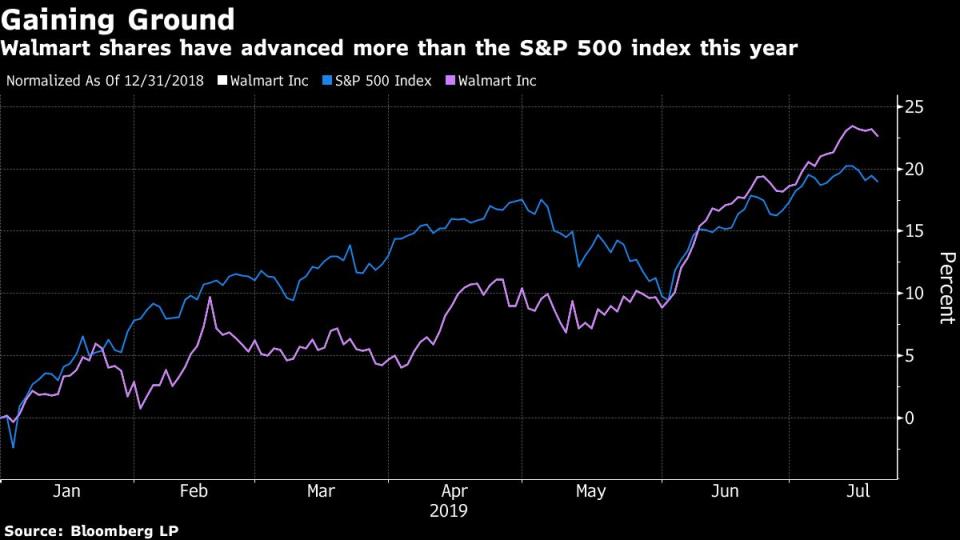Walmart Deepens Store-Digital Integration as Web Unit Struggles
(Bloomberg) -- Walmart Inc. is conducting its second U.S. restructuring in as many months to better integrate its money-losing online business with its 4,700 physical stores.
The world’s largest retailer will merge the logistics and finance teams for its e-commerce unit and stores, according to an internal memo obtained by Bloomberg News. The company’s merchandising operation, which makes critical decisions on what products to carry, when to carry them and at what price, will maintain separate teams “to enable focus and speed,” Chief Executive Officer Doug McMillon said in the memo.
Walmart’s digital business is inextricably tied to its stores, evidenced by its fast-growing grocery pickup service, where online orders are picked in its aisles, then trotted out to customers in the parking lot. Responsibility for that web grocery business falls under U.S. CEO Greg Foran rather than e-commerce chief Marc Lore.
The decision to keep merchandising separate -- for now at least -- illustrates the primacy of Walmart’s in-store merchants, who for decades have wielded vast power inside Walmart’s sprawling corporate bureaucracy. It also shows the increasing complexity of managing an online business that sells about 75 million products, many from small third-party sellers, and now promises next-day delivery in many states to battle rival Amazon.com Inc.
Separately, Walmart is expanding the role of Chief Customer Officer Janey Whiteside, who joined the company in 2018 after many years at American Express Co. She’ll now be responsible for running the team’s financial services, product returns and Walmart’s burgeoning advertising business -- ancillary units that are growing in importance as they generate incremental revenue and profit.
Renewed Pressure
Walmart is facing renewed pressure to produce earnings at its online unit as it tries to keep traditional rivals like Target Corp. at bay and simultaneously chip away at the lead built up by Amazon. Underscoring the challenge, the Seattle-based e-commerce giant just wrapped up its Prime Day promotional event earlier this week, with sales surpassing those on Black Friday and Cyber Monday combined. Walmart’s mission is complicated by the recent loss of its e-commerce chief revenue officer in the U.S., Scott Hilton, who had been a long-time lieutenant of Lore.
Another of Lore’s deputies, Nate Faust, who had been running the supply chain for Walmart.com, will move to a new, undefined role, the memo said. Faust was one of the founders of Jet.com, which Walmart acquired in 2016 and has now been fully integrated into the larger company amid declining traffic and revenue.
The newly combined logistics division will be led by Greg Smith, who currently runs that unit for the U.S. stores, while U.S. stores finance chief Michael Dastugue will take charge of the integrated team there. Ashley Buchanan, who currently runs merchandising at Walmart’s warehouse subsidiary Sam’s Club, will assume the new role of chief merchandising officer for U.S. e-commerce, but will remain in Bentonville, Arkansas, instead of moving to the unit’s California headquarters.
Walmart’s U.S. online business has grown, becoming a viable second fiddle to Amazon after the division’s revenue expanded 40% last year. But the business continues to be in the red, with losses expected this year of about $1.7 billion, up from $1.4 billion last year, according to Morgan Stanley estimates.
To contact the reporter on this story: Matthew Boyle in New York at mboyle20@bloomberg.net
To contact the editors responsible for this story: Anne Riley Moffat at ariley17@bloomberg.net, Jonathan Roeder, Mark Schoifet
For more articles like this, please visit us at bloomberg.com
©2019 Bloomberg L.P.

 Yahoo Finance
Yahoo Finance 

